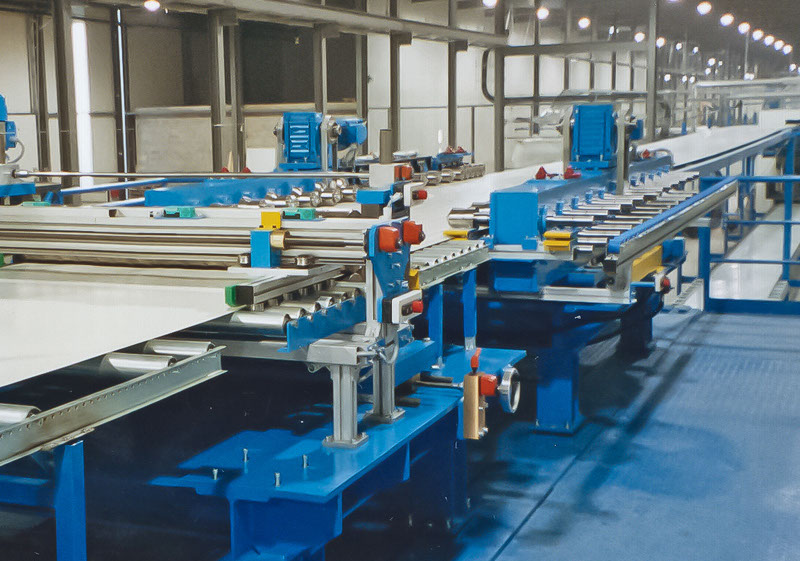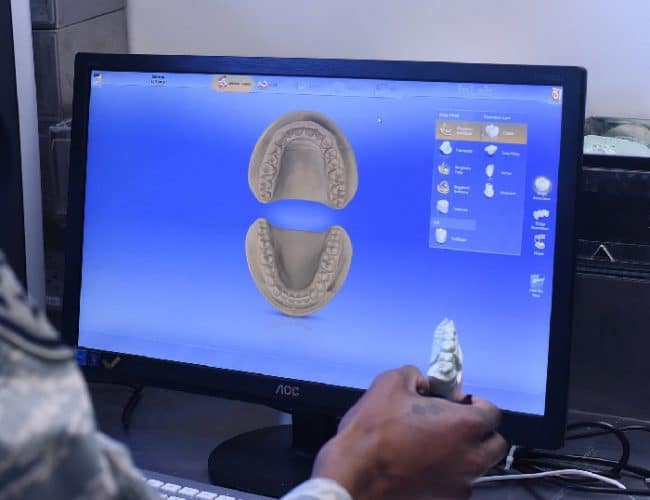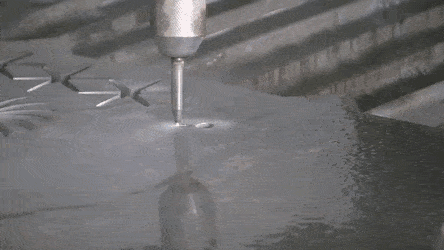Welcome to the August edition of World of CAD! We’ll be delving into some of the biggest tech and CAD-related news stories of the month. First up, there are exciting developments for anyone who aspires to live life the simple, Scandi way. We’ve also got a double-whammy from the health world and we’ll round things off with the latest in smart motorway technology. No more teasing—let’s dive in!
The future is flat-pack
It looks like the IKEA influence has well and truly peaked in 2018, with the prospect of flat-packed housing becoming a reality. Yes, innovative technology like 3D printing is rapidly becoming vital in the development of modular homes. This means CAD could end up playing a vital role in tackling the current housing crisis.

RDA’s production process for sandwich panels (Source)
Manufacturing firm RDA modular might be pioneers of the process. The company uses a combination of cold welding technology, 3D printing and a 3D injection system to create large monolithic panels (eventual walls and floors) that firms can transport in upright stacks and construct with relative ease on site.
Influenced by aerospace and automotive approaches to manufacturing, these panels make for efficient and environmentally friendly construction. In an interview with BIM+, RDA Modular’s chief technology officer, Romy Jardine, explained:
“We’ve been working (…) on some brand new technology that hasn’t been used in construction, including housing or modular. Using modern materials means we can make much stronger and lighter panels that are more eco friendly.”
This approach saves money in terms of both transportation costs and labor. In fact, thanks to these panels’ durable quality and significant strength, you can stack them up to four storeys high. Jardine envisions these apartments blocks becoming part of the landscape in future suburbs and cities.
Don’t start saving up for your very own modular home yet, though. While the flat-packed houses themselves are economical, the technology required to create the various parts comes with a hefty price tag. 3D injection equipment is around £8 million a pop, so whether this manufacturing approach takes off depends heavily on outside investment.
RDA Modular estimates that if they do succeed in establishing factories for these flat-packed homes, they could be pumping out 4-bedroom houses on a 6-9 month time scale. Impressive stuff!
Digital dentistry is on the rise

Image source: Malmstrom Air Force Base
Did you know CAD is helping to protect your pearly whites? As is the case with many other industries, computer aided design speeds up the manufacturing process and provides quick and affordable solutions for a range of dental requirements. We use milling systems, for example, to create crowns and bridges; 3D printers may be behind your latest retainer; and digital imaging makes dental scans a breeze!
In fact, digital dentistry is on the increase, according to recent studies that highlight its many benefits. Frost and Sullivan wrapped up a major analysis of the digital dental solutions market this August. A big takeaway from their findings is that the role of CAD in the dental world is likely to continue expanding in order to meet patient demands.
While CAD and CAM solutions are already prevalent in dental laboratories, such technologies are now moving into local surgeries. For example, chair-side milling systems (by which dentists can make things like crowns while the patient waits) are increasing in popularity and availability. Frost and Sullivan propose that such developments will cut long terms costs, as technology is able to simplify a number of common dental processes. On top of this, the heightened focus on CAD solutions should improve the scope and accuracy of the digital treatments currently available.
CAD implants helping patients with rare chest muscle deformity
Ever heard of Poland syndrome? Nope, neither had we. All of that changed, however, when we heard about how CAD is helping those with the condition.
Poland syndrome is a congenital condition that affects roughly 1 in 30,000 people. The syndrome causes chest abnormalities that lead to the underdevelopment of one side of a person’s pectoral muscles. Those suffering from the syndrome (mostly men) often opt for cosmetic procedures to even out the appearance of the chest. And here’s where CAD comes in…
A paper in the August issue of Plastic and Reconstructive Surgery reveals how doctors are using innovative techniques to create the silicone implants used for reconstructive surgery. Here’s how it goes down:
“A thin-section computed tomography scan of the patient’s chest is obtained. The digital data are used to create a 3D CAD model of the implant, ‘virtually correcting’ the patient’s chest deformity. A prototype of the CAD model is prepared using 3D machining and used to cast a rubber silicone elastomer implant.”
It’s a far cry from the way many of us typically use CAD in fields like engineering and manufacturing. We’re always glad to see the varied applications of CAD, though—especially when it has such a positive use!
Work to begin on a new ‘WiFi road’ in the UK
Smart motorways are about to get a whole lot more intelligent, thanks to the introduction of WiFi. That’s because, in Kent, England, engineering and consultancy firm Costain have received the contract to design and install the A2/M2 smart motorway. You might also hear this referred to as the Connected Vehicle Corridor project.
The company recently revealed plans to install WiFi on the carriageway to send data between roadside units and vehicles. The information transmitted could be anything from speed limits to road conditions.

Costain want to use the findings to work out the best way to share information between vehicles and infrastructure. The company hopes that, once installed, the ‘WiFi road’ will improve journeys and reduce congestion by informing drivers of disruptions like road closures well in advance.
This is a big, important project, with government institutions, tech firms and telecom companies all coming together to work on the plans.
Costain chief executive, Andrew Wyllie, explains:
“This is an important step in making our roads safer and improving journey time reliability by embracing cutting-edge technology.”
It’s great to see so many business sectors embracing technological advances. These are really exciting developments that could also set the standard for future smart motorways. Given the traffic jam we endured on the commute to work today, we sure hope so anyway!
That just about wraps up the most interesting and important news from the CAD industries this month. Be sure to check back in at the end of September for all of the latest. Things sure move fast in the world of tech, so who knows what we’ll be dealing with by then!
For now, we’ll leave you with this super mesmerizing mechanical GIF, courtesy of the Reddit community. Enjoy!

When a waterjet isn’t limited to 90 degrees. (Source)

